All products featured are independently chosen by us. However, SoundGuys may receive a commission on orders placed through its retail links. See our ethics statement.
Apple AirPods Pro 2 vs Sony WF-1000XM4
November 13, 2024
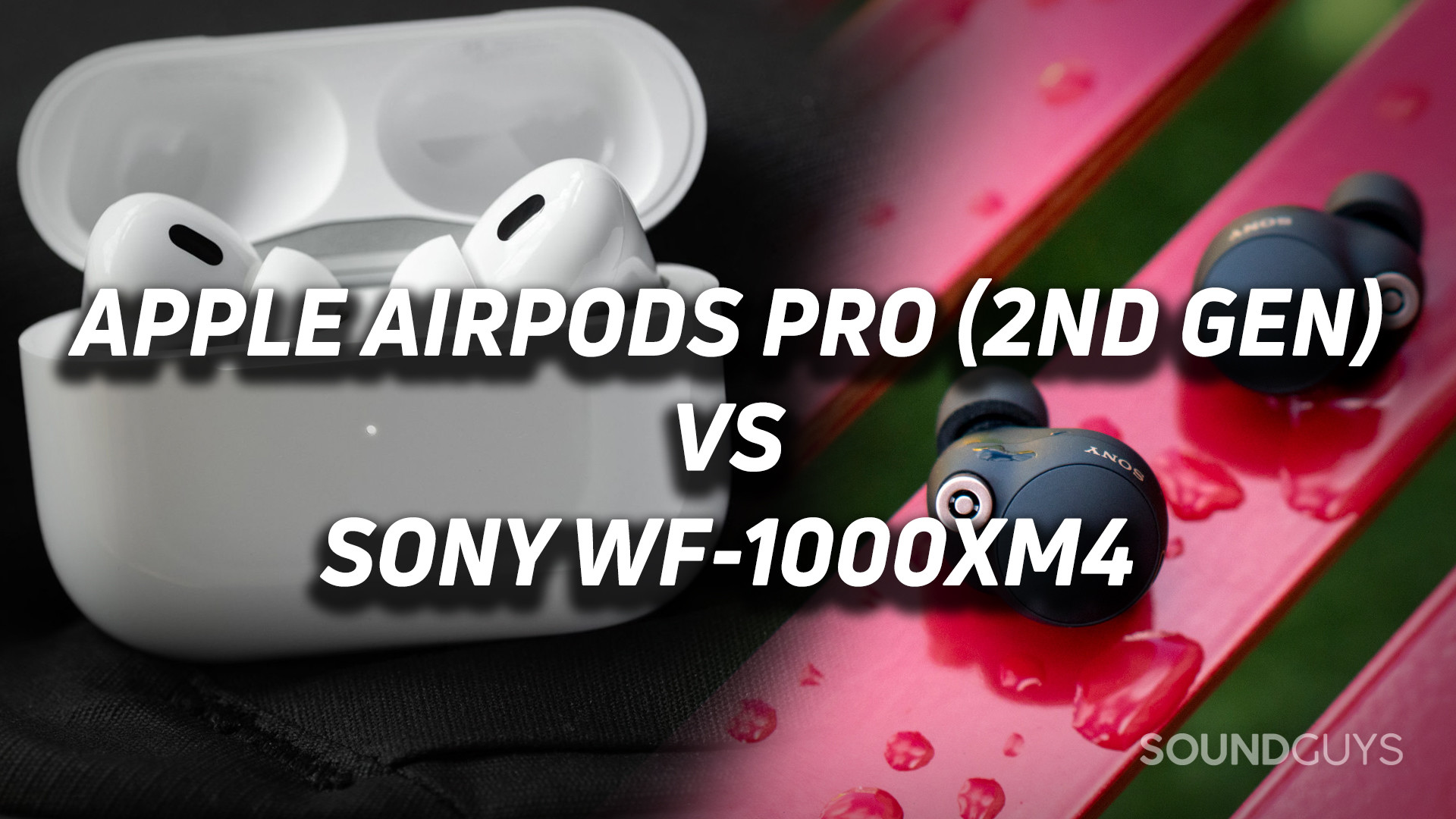
If it felt like a close match when debating between the Apple AirPods Pro (1st generation) and the Sony WF-1000XM4, the decision is all the more tight now with the updated, Apple AirPods Pro 2. The latest Apple AirPods Pro 2 is packed with all kinds of new goodies and a few novel additions to challenge the stalwart Sony WF-1000XM4. Does Sony continue to hold its own, despite no longer being the new kid on the block? Let’s unpack these two to see which pair of premium true wireless buds fit into your life best.
Editor’s note: this article was updated on November 13, 2024, to include information about Apple hearing health features and USB-C support, update links, and update the naming convention of the previously titled AirPods Pro (2nd generation).
What’s it like to use the Apple AirPods Pro 2 compared to the Sony WF-1000XM4?
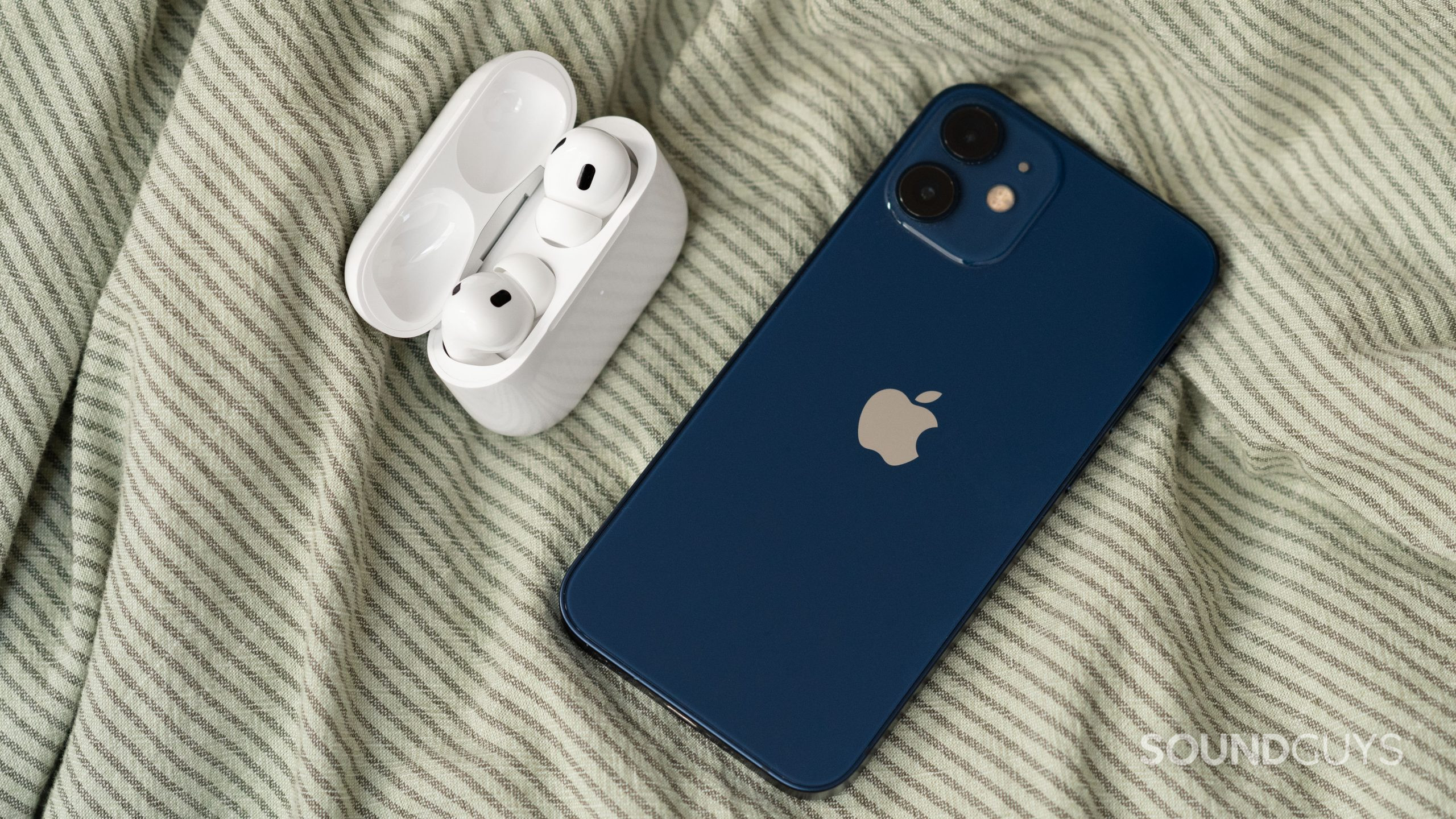
Consider the Apple AirPods Pro 2 more of an update than an entirely new design. As such, outwardly the buds deviate very little from the iconic design; the somewhat divisive stems house mics and can be used to command your device. At 5.3g per bud, its light weight keeps the AirPods Pro 2 comfortable for long sessions. Previously, only the buds were safeguarded from moisture with an IPX4 rating, whereas here the rating applies to both the buds and case, which is nice considering replacing a case is not cheap.
In the box you’ll find four ear tips to choose from, the charging case, the buds, and a Lightning or USB-C charging cable. Pairing via Bluetooth with an iPhone is a breeze, plus you don’t need to download anything extra to get started. Siri is accessible hands-free, and the H2 chip allows easy device switching between Apple products. You’ll want to use the built-in fit test which also configures the Spatial Audio and Adaptive EQ. There’s a bit of light tweaking in the Settings app in iOS, but largely, AirPods Pro 2 encourages you to set and forget.
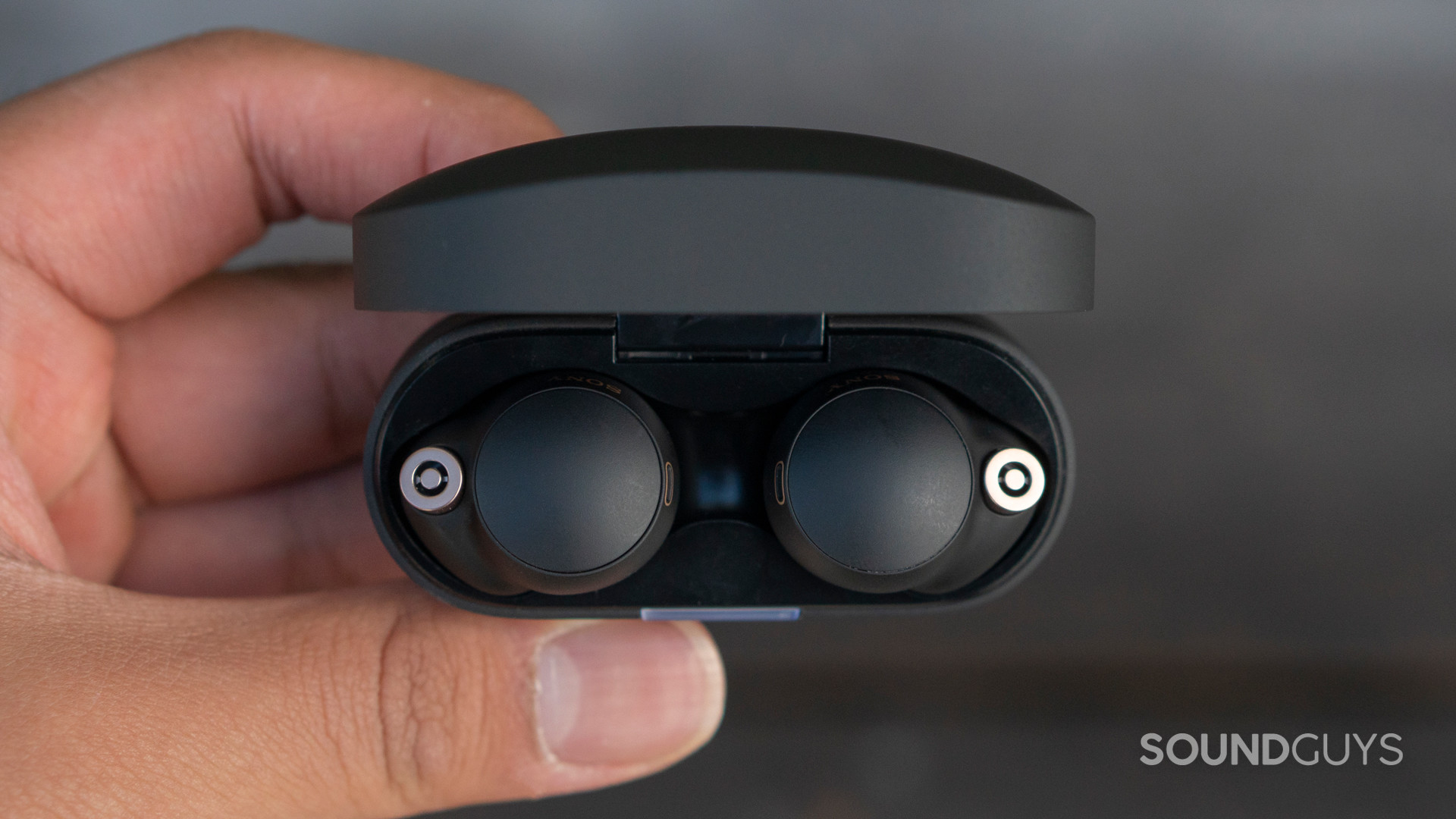
You’ll find a pretty standard set up situation with the OS agnostic Sony WF-1000XM4, including the need to download the Sony Headphones Connect app to get the most from the buds. The WF-1000XM4 lacks stems, and exudes an overall more stealthy appearance, especially if you choose the black colorway. At 7.4g per bud, you’ll feel a bit of weight difference, though the included memory foam ear tip options ought to help distribute some of that additional weight. Once you download the Sony Headphones Connect app a fit test will ensure you’ve got the right size too, which follows a similar set-up for 360 Reality Audio.
Sony’s WF-1000XM4 has the same IPX4 certification as the Apple AirPods Pro 2, but does not include the case in that rating. Concerning the daily listening experience, Sony includes the digital sound enhancement engine (DSEE) Extreme, to algorithmically “fill in” missing detail in your lossy audio files. The touch controls work predictably, and once you assign in the app your preferred virtual assistant, it’s accessible from the buds, albeit not hands-free. Sony has continued to update the capabilities of the WF-1000XM4 since its release, including a forthcoming update allowing Bluetooth multipoint, which is a good sign when buying premium earbuds or headphones.
How do you control the Apple AirPods Pro 2 and Sony WF-1000XM4?
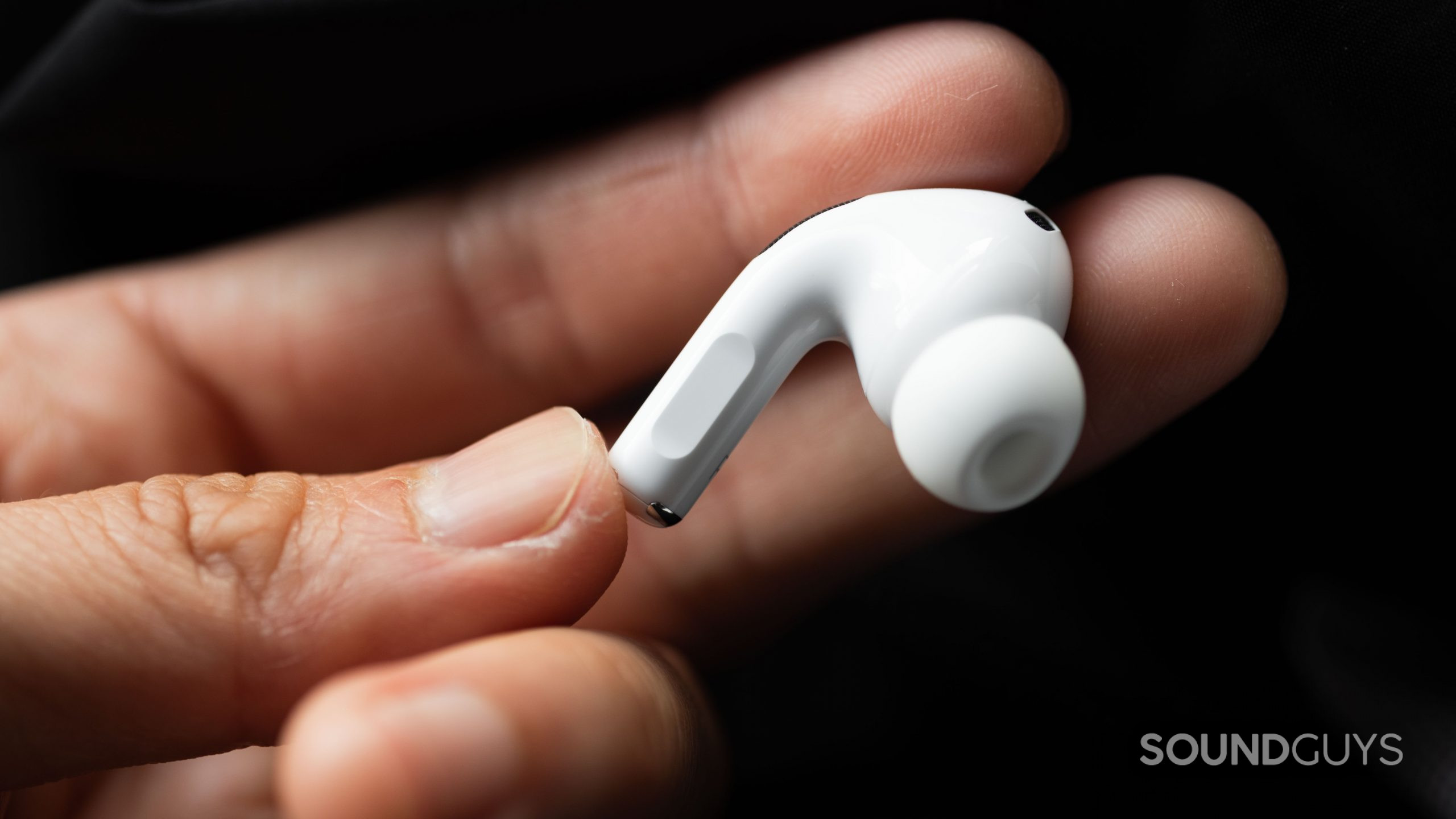
Apple has dialed in the controls and touch sensitivity of the AirPods Pro 2, along with hands-free access to Siri. A built-in skin sensor ensures that the in-ear detection prevents continued playback when you remove the bud from your ear. Below are the controls for the AirPods Pro 2.
| INPUT (stems) | ACTION |
|---|---|
One press | Play/pause/answer call |
Two presses | Next track |
Three presses | Previous track |
Press and hold | Toggle ANC/Adaptive Transparency modes |
Swipe up/down | Increase/decrease volume |
"Hey Siri" | Change volume, request directions, playback control, receive messages, and more |
The Sony WF-1000XM4 touch controls are somewhat remappable in the Sony Headphones Connect app. You don’t get a hands-free virtual assistant, but some of us are too inhibited to say, “Hey Siri” in public anyway. An in-ear detector also pauses or plays your audio automatically. Here are the default settings for the WF-1000XM4.
| INPUT | ACTION (left bud) | ACTION (right bud) |
|---|---|---|
| INPUT ONE TAP | ACTION (left bud) Mute/ANC/Ambient sound | ACTION (right bud) Play/Pause |
| INPUT TWO TAPS | ACTION (left bud) N/A | ACTION (right bud) Track forward/answer call |
| INPUT THREE TAPS | ACTION (left bud) N/A | ACTION (right bud) Track backward |
| INPUT TAP AND HOLD | ACTION (left bud) N/A | ACTION (right bud) Smart assistant |
Should you use the apps of either Apple AirPods Pro 2 or Sony WF-1000XM4?
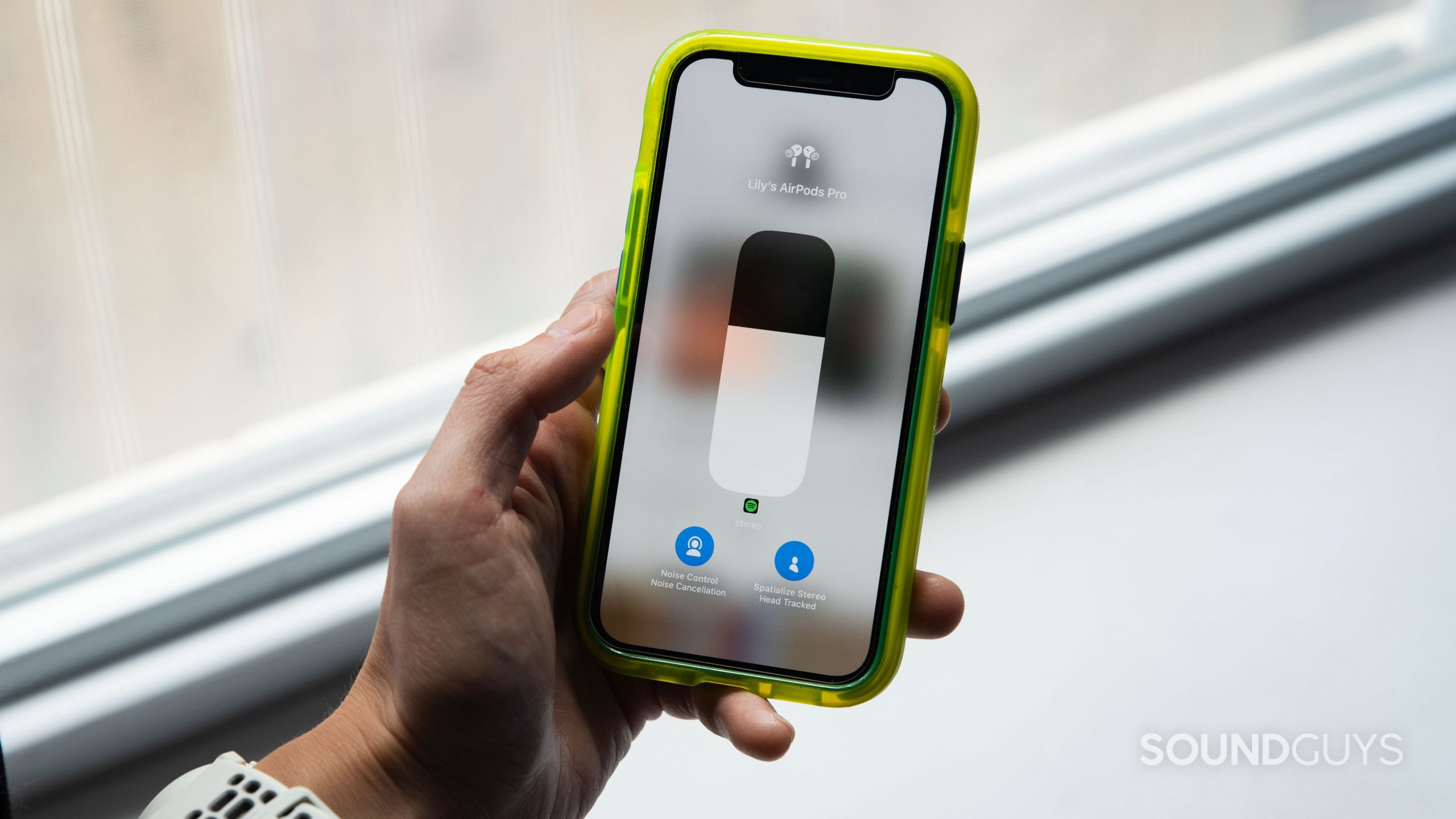
Apple packs most of its features in the native app found on iOS/iPadOS through Settings, so if you concern yourself with privacy and data, it’s all linked to you anyhow. There you’ll find Spatial Audio, the Spatialize function (which upscales mono and stereo content to surround using an algorithm), and listening modes (ANC and Adaptive Transparency). You get an ear tip fit test, and the option to alter some control settings, like touch-and-hold. There’s also head tracking which works by panning your audio in relation you in space. A recent update brings three EQ presets and you can choose which bud’s mic to use, although that’s all weirdly placed under Accessibility, and not where the other AirPods Pro settings reside. The AirPods Pro 2 can now be used as a hearing aid. For firmware updates you’ll need an iPhone or iPad as well.
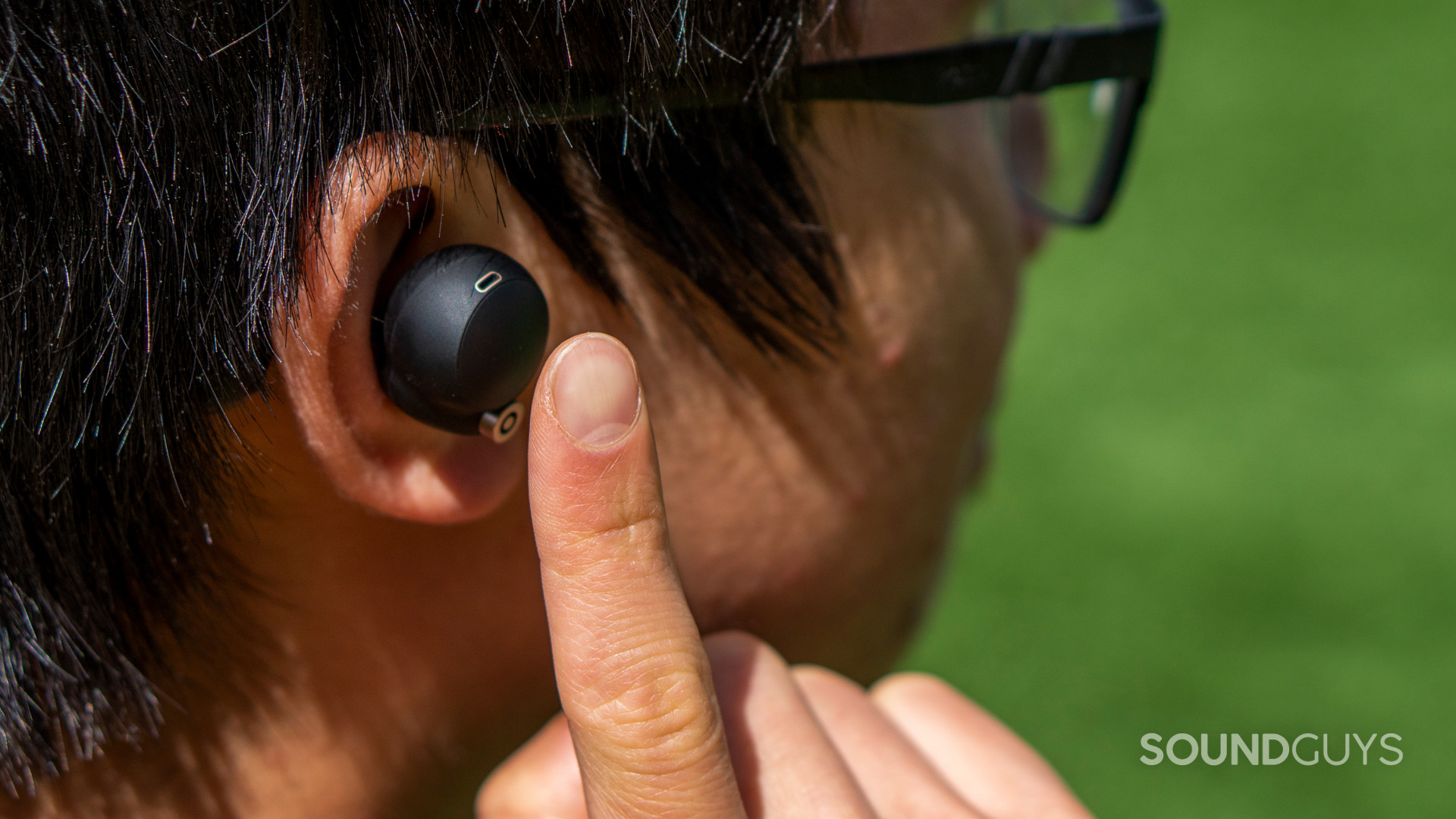
Unlike AirPods Pro 2, the Sony WF-1000XM4 and its companion app, Sony Headphones Connect works equally well with Apple or Android. In it you can access listening modes (ANC or Ambient), an equalizer, and Sony Reality 360 Audio. This surround sound function works similarly as the Spatial Audio on the AirPods Pro 2 with compatible media and services. The interface is less stylish, but it’s all there in one location.
How do the Apple AirPods Pro 2 and Sony WF-1000XM4 connect?
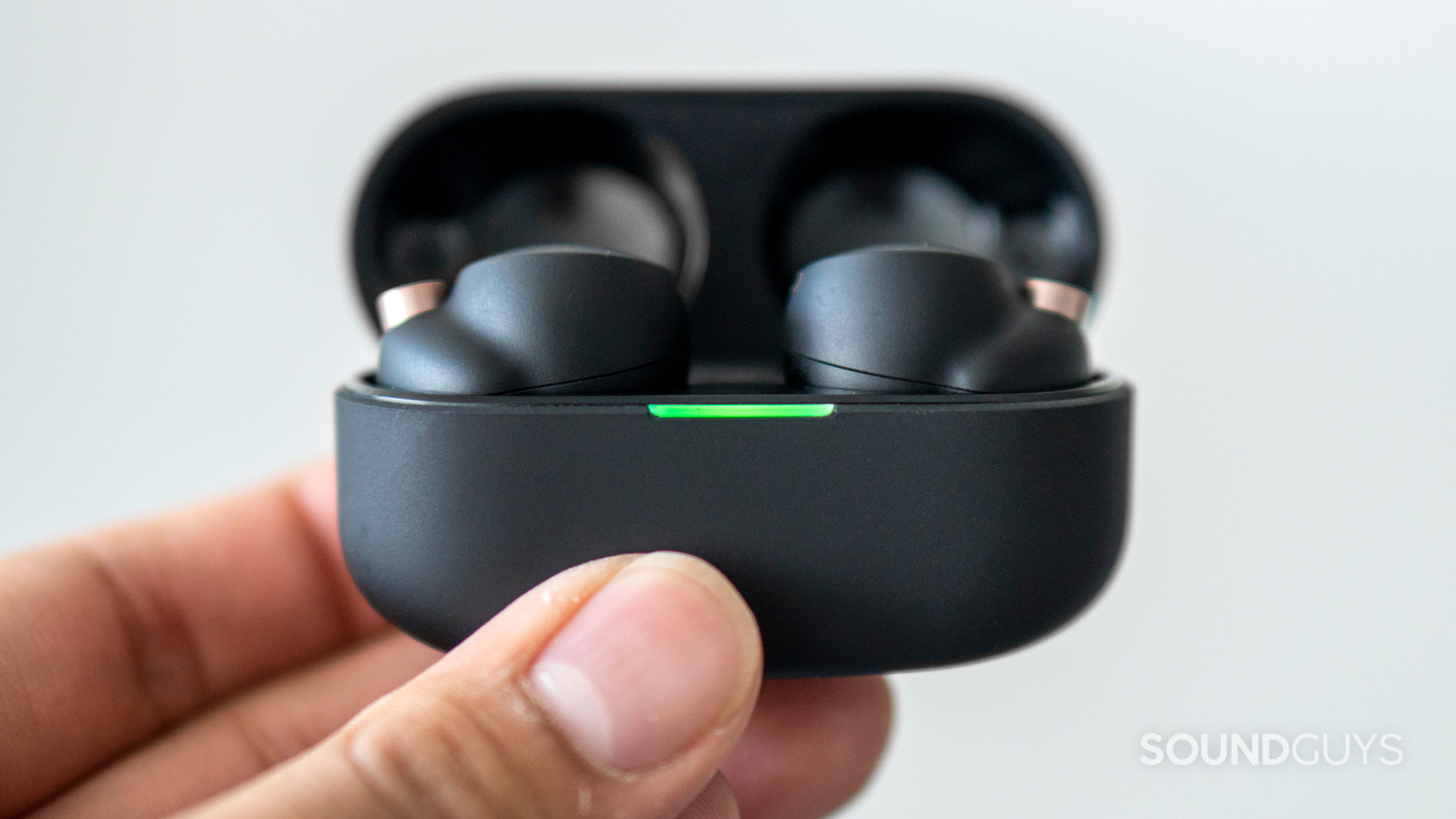
The Apple AirPods Pro 2 sports the latest Bluetooth 5.3 with the H2 chip aimed at supplying an efficient and steady connection to your Apple devices. It uses AAC and SBC codecs, with AAC being well optimized on Apple devices. Like previous AirPods, the AirPods Pro 2 does not have Bluetooth multipoint, but rather it can switch between Apple devices on the same iCloud account, and audio sharing.
Sony uses SBC, AAC, and LDAC codecs with Bluetooth 5.2. AAC ought to work at the same bit rate with your iPhone as the AirPods Pro 2. Android owners will gain better performance from the LDAC codec available on the WF-1000XM4 than AAC or SBC.
With an iPhone the process of Bluetooth pairing is quite painless.
- Hold your case near your phone with the lid open.
- A card will pop up on the screen. Tap Connect.
With an Android device here’s how to pair AirPods Pro 2.
- Turn on Bluetooth in your phone’s settings, and leave Bluetooth settings open.
- Press the button on the AirPods Pro 2 case until the indicator light goes white.
- In your Bluetooth settings the AirPods Pro ought to show up as an available device. If it doesn’t, turn Bluetooth off and then on again to refresh it.
- Select the AirPods Pro from the list to connect.
Pairing the Sony WF-1000XM4 is pretty simple once you have instructions, regardless of whether you use an iPhone or an Android phone.
- Ensure Bluetooth is on in your phone’s settings.
- Remove the WF-1000XM4 buds from the case.
- Press and hold both earbuds for 6 seconds to initiate pairing mode. If you have the buds in your ears, a voice will tell you it’s in pairing mode.
- Select the WF-1000XM4 when it shows in the Bluetooth settings list of available devices.
Currently, the Sony WF-1000XM4 does not have Bluetooth multipoint, however, Sony has announced a forthcoming update will add the feature.
Is battery life better on the Apple AirPods Pro 2 or Sony WF-1000XM4?
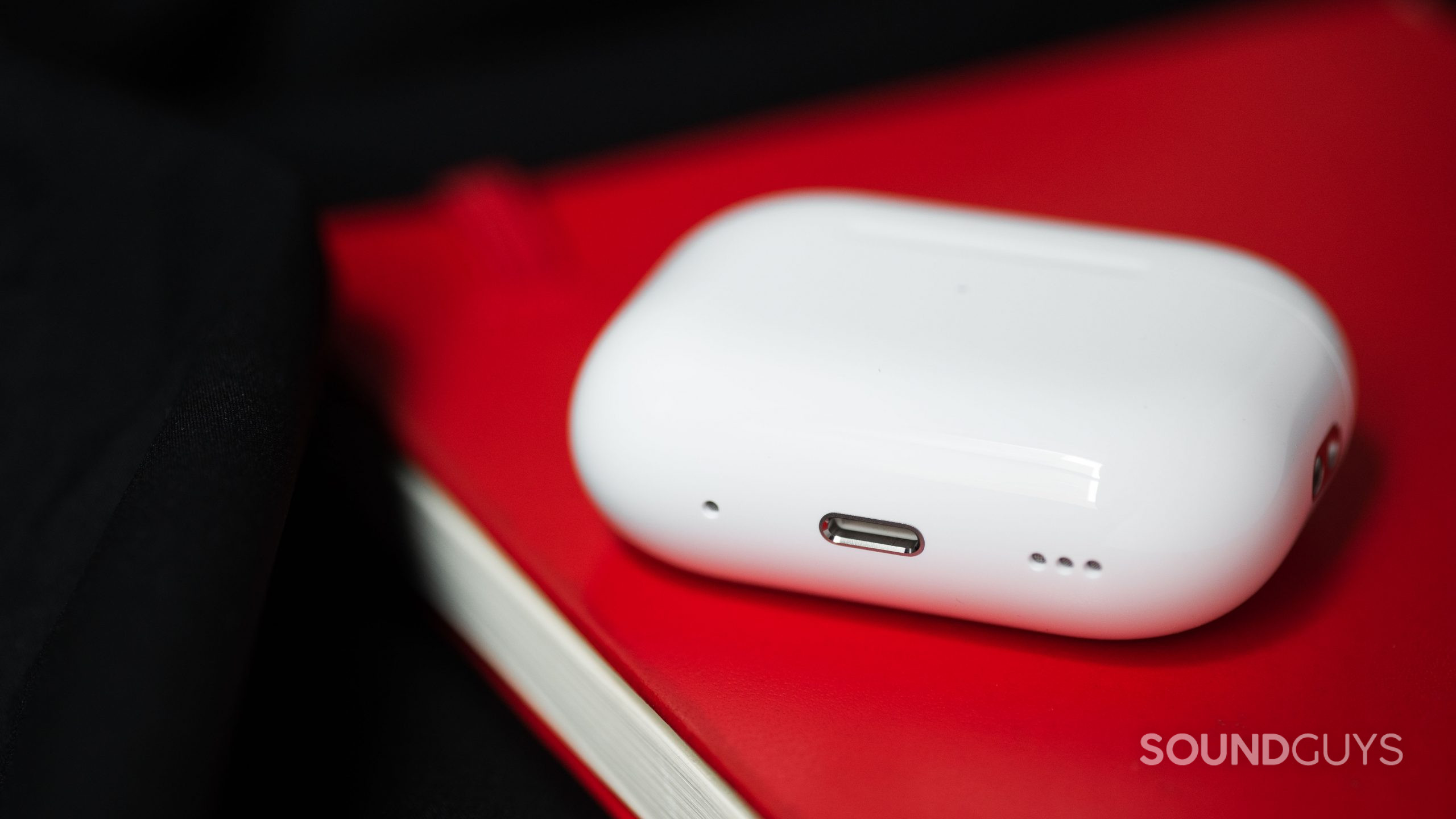
According to our standardized tests the AirPods Pro 2 reaches 5 hours, 43 minutes with ANC on. It uses a Lightning (or USB-C with newer models) cable, Mag Safe or wireless Qi pad to charge the case. The battery life of the Sony WF-1000XM4 lasts an extra two hours at 7 hours, 43 minutes per charge. The WF-1000XM4 uses a standard USB-C connection, or a wireless mat to charge. There are an additional two charges provided by the case.
Both have overall similar total playback times, but the Sony buds will require fewer top ups, which is convenient and better for the planet by reducing charge cycles that drain the battery’s capacity.
Yes, a 5 minute charge will give you 60 minutes of playback with the Sony WF-1000XM4.
Charge your Apple AirPods Pro 2 for 5 minutes to gain 60 minutes of playback or talk time.
Does the Apple AirPods Pro 2 or Sony WF-1000XM4 block noise better?
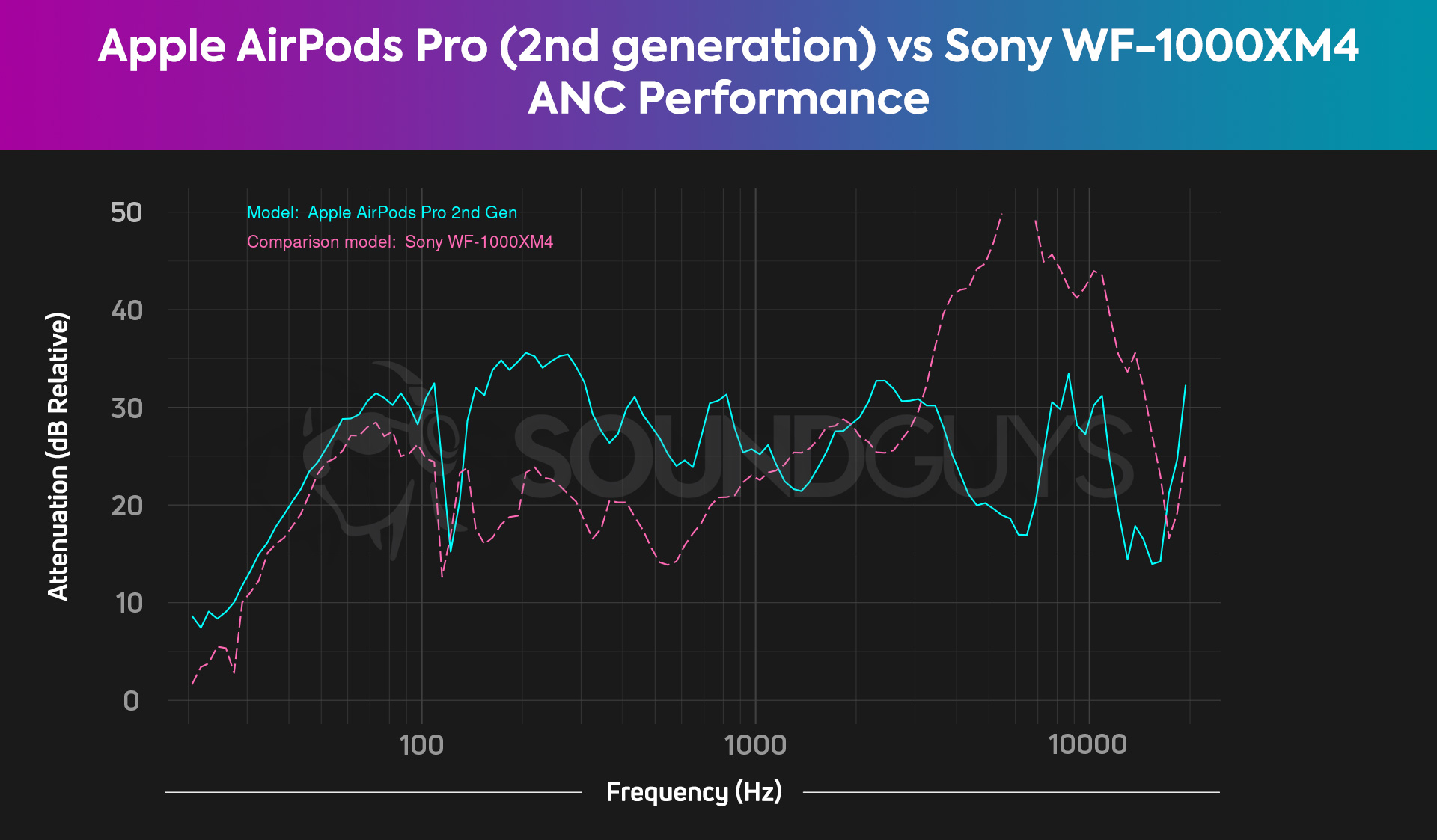
For isolating you from high-pitched incidental noises, the memory foam ear tips included with the WF-1000XM4 are hard to beat, as they really seal your ear. It’s one of the better examples of acoustic isolation, which is great for preserving your hearing. The AirPods Pro 2 has pretty average isolation, although it shines in its active noise canceling (ANC) implementation. Particularly, noise below 1kHz receives up to 35dB of attenuation with the AirPods Pro 2, which cancels significantly more external noise than the Sony buds in that range. Sony’s ANC is nothing to snub on either, but it’s no longer the leader of the pack.
Does the Apple AirPods Pro 2 sound better than the Sony WF-1000XM4?
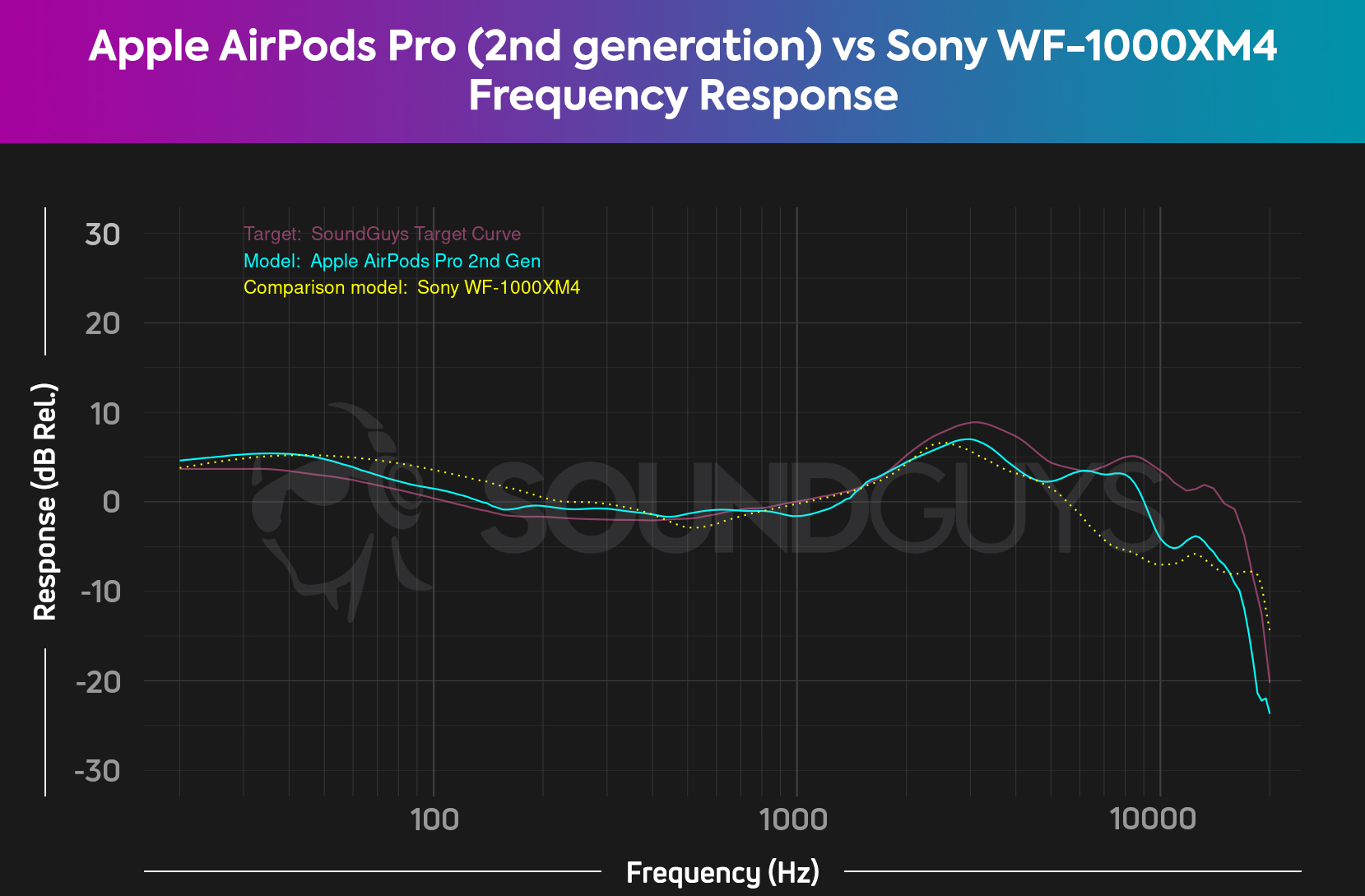
If you thought sound might differentiate the AirPods Pro 2 and the WF-1000XM4 most acutely, you’d be surprised by our test results. Both sets of buds sound good. Apple has come a long way from the bass-lite original AirPods of yesteryear and Sony might have some bonkers XB (for extra bass) tunings, but not here.
Throughout the mid-range, Apple and Sony responses are largely within a couple dBs of each other. Both buds closely follow our preferred headphones curve from the mids through the lows, with the WF-1000XM4 having a touch more bass volume than the AirPods Pro 2 and the ideal, but it’s not much of a difference. Through the highs the AirPods Pro 2 under-emphasizes relative to our curve by less than 5dB, except above 10kHz towards the edge of human hearing. Treble frequencies reproduced by the WF-1000XM4 above 2kHz consistently taper off more significantly. This leads the WF-1000XM4 to sound comparatively more bass and mid heavy than the AirPods Pro 2 by default.
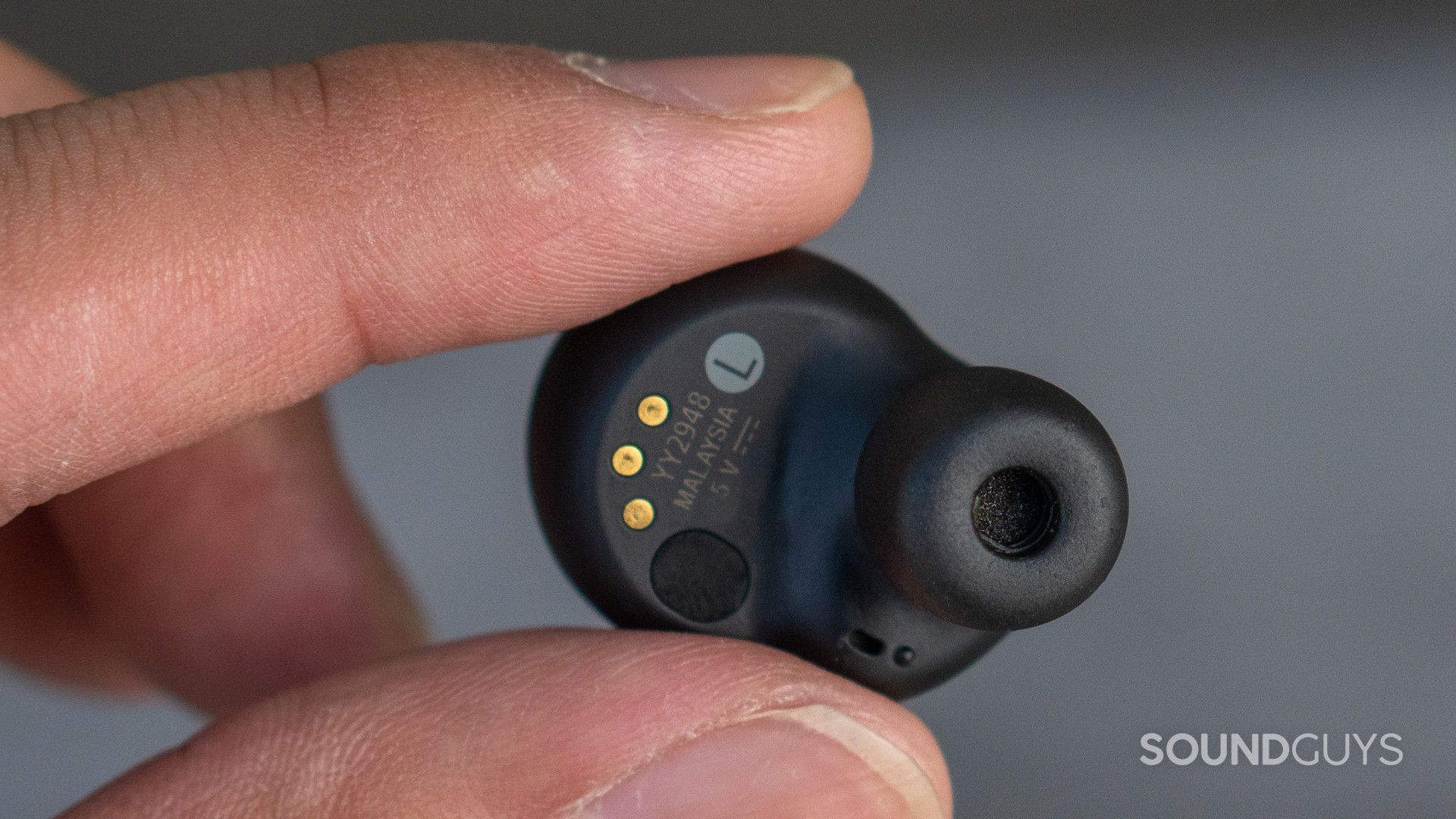
Of course, all of this is tweakable with equalizing, although Apple products are far more limited in this regard. Particularly, the WF-1000XM4 has an equalizer in the Headphones Connect app. You can only access some EQ presets through Settings and Accessibility menu in iOS/iPadOS, although it is not as granular. Generally speaking, the AirPods Pro 2 sounds better, but the WF-1000XM4 has more nuanced capabilities in the app.
Does the Apple AirPods Pro 2 or Sony WF-1000XM4 have a better microphone?
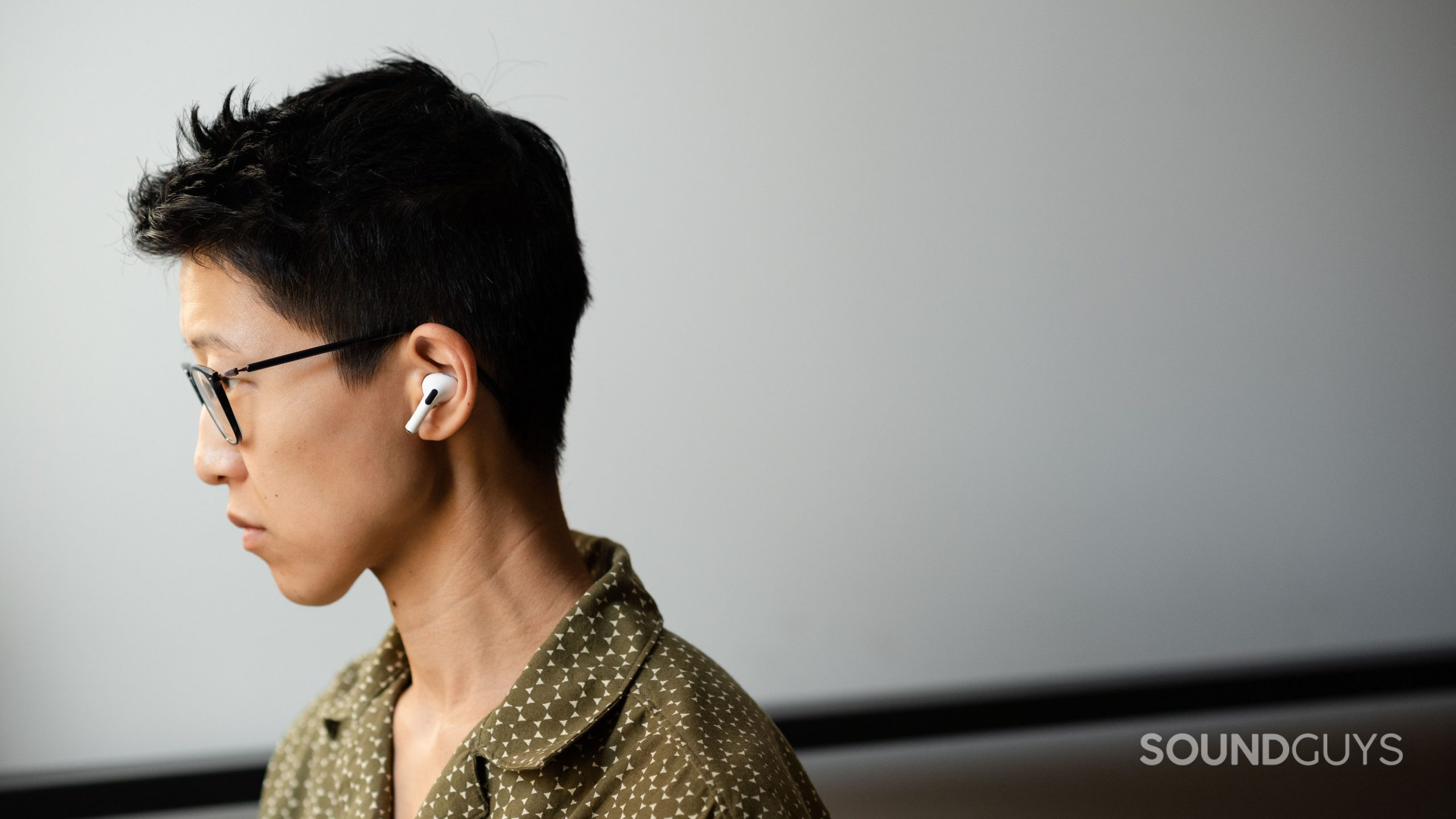
The AirPods Pro 2 has a reasonably good microphone array, with slightly better clarity thanks to more level in the high frequencies than the Sony WF-1000XM4. Both perform well, although the WF-1000XM4 can lend an ever so slightly congested character to your voice due to the relative under-emphasis of treble.
As demonstrated in our test for office conditions, the AirPods Pro 2 passes some clatter, but will retain your voice very well. In contrast, the WF-1000XM4 does okay in office conditions, although, you can hear the limitations, particularly towards the end of the sample (00:54) when the noise rejection is challenged by the sound of a vacuum cleaner resulting in an unnatural sounding voice. If you plan on using your buds for a lot of conference calls, you may want to consider a dedicated headset or even a gaming headset with a boom microphone instead.
Finally, neither the AirPods Pro 2 nor the Sony WF-1000XM4 suit windy conditions very well. Both tend to cut out entire sections of speech when hit with wind. So be sure to keep most of your calls indoors, or on a still day, with either pair of earbuds.
Apple AirPods Pro 2 microphone demo (Ideal conditions):
Sony WF-1000XM4 microphone demo (Ideal conditions):
Apple AirPods Pro 2 microphone demo (Office conditions):
Sony WF-1000XM4 microphone demo (Office conditions):
Apple AirPods Pro 2 microphone demo (Windy conditions):
Sony WF-1000XM4 microphone demo (Windy conditions):
Which microphone sounds better?
Editor’s note: Our standardized test setup plays back pre-recorded phrases from a calibrated artificial mouth in our test chamber, either with or without simulated background noises, simulated reverberant spaces, or artificial wind. This means that samples from every product can be directly compared, which makes it far easier to make meaningful comparisons between products in terms of the raw speech quality or the product’s ability to reject noise. While this setup is consistent, it’s unable to allow the earbuds to fully detect speech as they would in the real world (using vibrations), so you may experience something different than in our demos above.
Should you get the Apple AirPods Pro 2 or Sony WF-1000XM4?
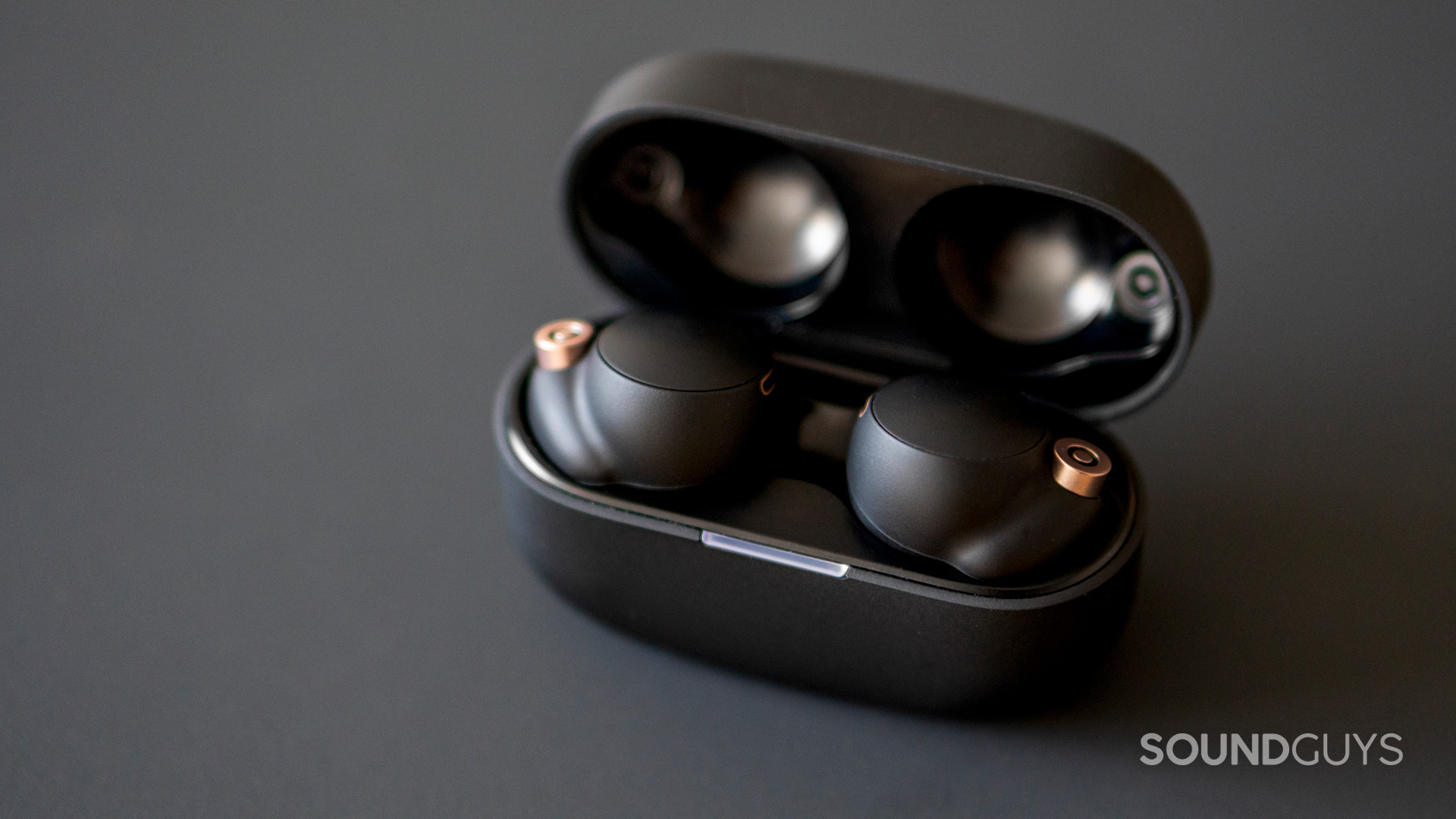
For Android users the decision ought to be easy: the Sony WF-1000XM4 has more accessible features on your device, rather than the walled garden of Apple. The choice might be a bit tougher for Apple users, because both products work equally well with an iPhone. Both have solid noise canceling, with the WF-1000XM4 blocking high frequencies better, and the AirPods Pro 2 more consistently filtering noise with similar amounts of attenuation across the spectrum.



Indeed, both sets of buds sound good too. The AirPods Pro 2 has better tuning out of the box, while the WF-1000XM4 offers more user flexibility with EQ available. For many it will likely come down to whether you use Apple Music and plan to utilize Spatial Audio, or if you’re more interested in Sony 360 Reality Audio as your surround sound solution.
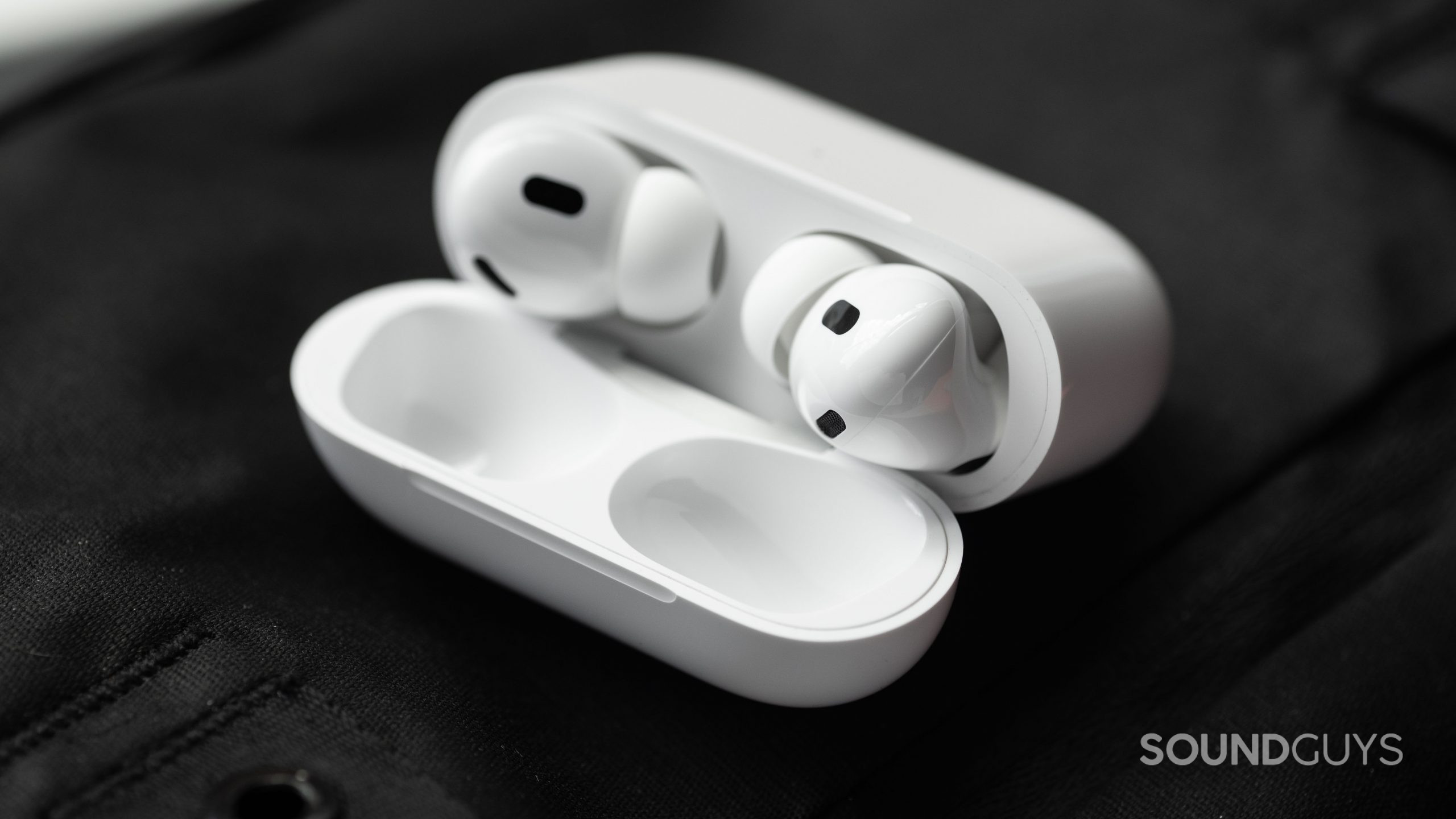
Not to ignore price in this comparison, the Sony WF-1000XM4 sees more flux in sale pricing, which has landed it at times as much as $50 cheaper than the AirPods Pro 2. For many that difference in cost is significant enough to choose Sony, unless it’s the exclusive features on the Apple buds you seek, such as the Spatialize algorithm. If that’s the case, then you’ve already made up your mind.
What should you get instead of the Apple AirPods Pro 2 and Sony WF-1000XM4?
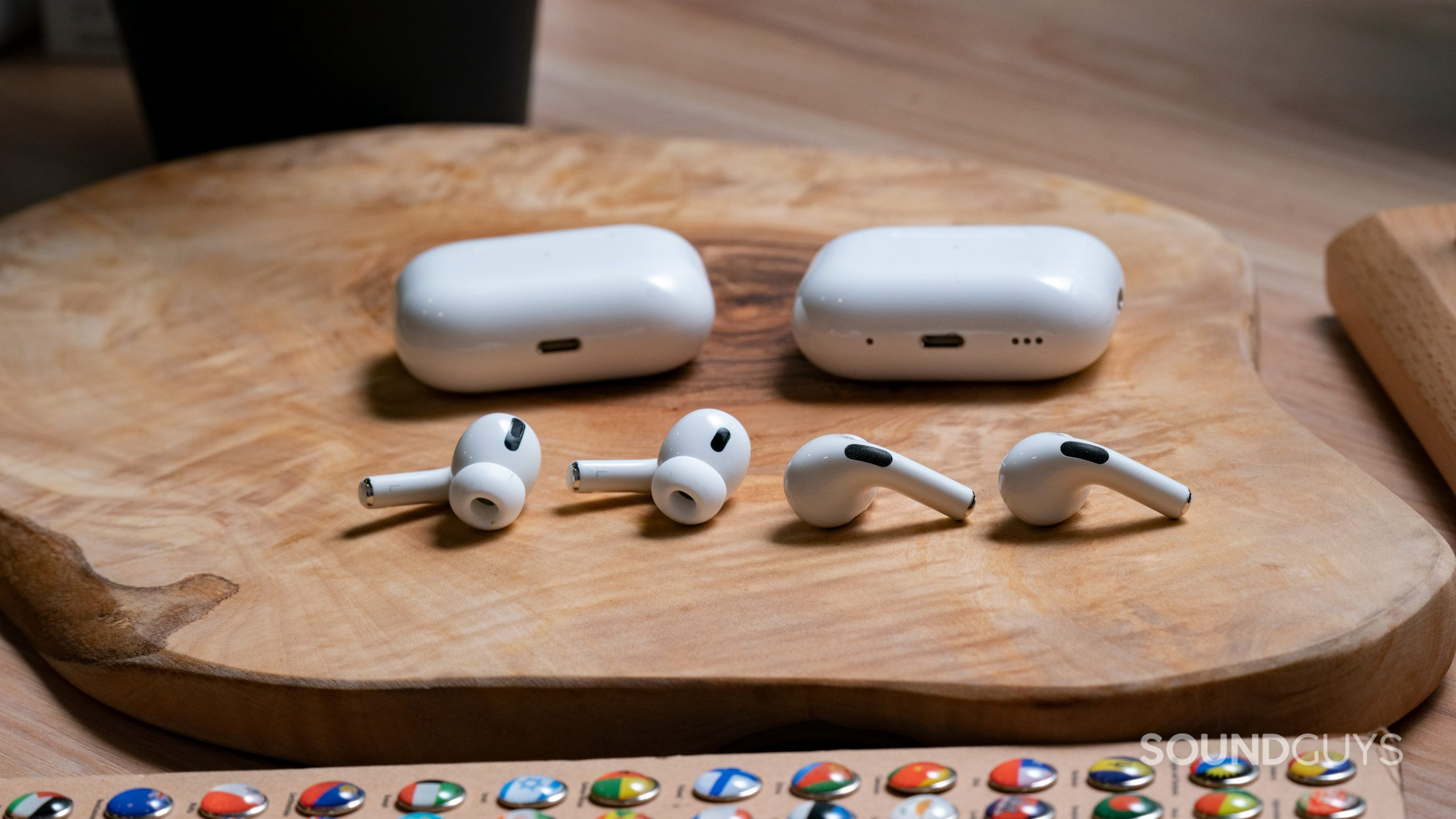
Before you jump on the Sony WF-1000XM4 train, make sure to check out the newer Sony WF-1000XM5 ($298 at Amazon). So you might want to wait and see how that one compares, or at least if it knocks down the price of the WF-1000XM4.
The first version of Apple AirPods Pro is still a viable option. Additionally, the AirPods Pro (1st generation) received a price drop (currently found for on the product’s website) since the new AirPods Pro 2 came out. You can see how they stack up, but the gist is mainly that the original version has less effective ANC.
If 3D sound does not interest you, stick to good sounding, premium earbuds with the Sennheiser MOMENTUM True Wireless 3. These buds work equally well with any OS, and you can grab them for $169 at Amazon. Unlike both Sony and Apples sets, the MOMENTUM True Wireless 3 has optional stabilizers to really lock in your in-ear fit, which is helpful for folks on the run, or difficult to fit ears. It also competes well in noise canceling capabilities.
Lastly, these are a bit middle of the road, but the Sony LinkBuds S sell for $148 at Amazon. These have a lot of the same features as the WF-1000XM4 and use the same app. The LinkBuds S retain 3D audio and ANC (albeit less effective), so these are worth a gander.
Since many people will shop based on their device, you can also see what works best with your iPhone. Since increasingly manufacturers create products aimed at a specific operating system and hardware, that can dictate which buds make sense with your phone.
Frequently asked questions
You can workout with the AirPods Pro 2 thanks to the IPX4 rating to protect against sweat. You may bump up against fit security issues as with any hook-less and wing-less earbuds. For dedicated buds to exercise with, you may want something more purpose built.
Maintenance and care for the Apple AirPods Pro 2 is pretty similar as other models in the AirPods line up. You’ll want some swabs, gentle dish detergent, isopropyl alcohol, and clean paper towel or cloths. Be sure to go through our instructions fully.